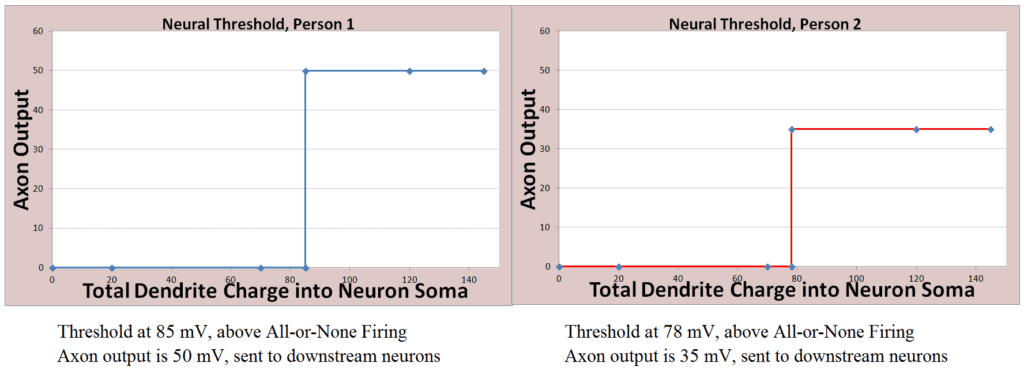This page explains that the magnitude of the Almost Gate imply differential effects by individual. The Almost Gate post explains how the generic Almost Gate arises naturally from recognized neural properties.
Just as a gate allows entry only when the key is available and once in, everyone is allowed the same privileges, the Almost Gate allows information to flow past it when a specific amplitude or higher of input information (the neural threshold) arrives at the same time.
That input information (which has various amplitudes coming in, always greater than the Almost Gate for the neuron to fire) is delivered downstream as if the input was exactly the same as previous occasions when it delivered an output signal–although that is not true or at least not knowable.
You may think since we all have the Almost Gate, it evens out in how we think.
People are Different
However, it’s not the case that everyone has the same Almost Gate. Everyone has an Almost Gate, but the amplitude is distinct and varies among people. Yours may be higher than mine or not. The functioning is the same, but the results are different. If two different objects have two features that match, an artist might declare their similarity, while an accountant might deny any similarity.
Do you find it surprising that different inputs give rise to the same output? If you think this is just an odd-ball case, Neural Cascade explains how step-wise Almost Gates affect cognition at all levels of brain processing.

